Getting to Hakone was by far the most complicated journey yet.
We started with a local train, ‘Hilda 6’ from Takayama to Nagoya then the Bullet Train ‘Hikari 520’ from Nagoya to Odawara and finally a local bus ‘Hakone Tozan’ from Odawara to our hotel at Hakone.
Our Japan Rail Pass was due to run out so we purchased a Hakone Free Pass at Odawara Station. This, we were told, would get us onto all sorts of transport in the Hakone area.
Hakone is in the mountains on the eastern side of the Hakone Pass and centered around Lake Ashi. It’s a volcanically active area with many hot springs or Onsen. It lies within the Fuji-Hakone-Izu National Park, which has been designated by UNESCO as a Geopark.
The main reason for our stop here was to see Mount Fuji.
Our map showed us that there were three excellent places to view this icon of Japan.
The first was from the Hakone Rope-way between Ubako Station and Owakundani Station. The second was from the Hakone Sightseeing Cruise on Lake Ashi, near Hakonemachi and Moto-Hakone. Our third opportunity was from the observatory in the Hakone Detached Palace Garden in Hakonemachi.
We arrived late in the afternoon, so all we could manage was a quick walk down to the lake to determine where the rope-way and cruise pier were located.
Unfortunately the weather was closing in again and when we looked out the next morning, the skies were grey and the clouds hanging low over the mountains.
Any chance of seeing Fuji was remote.
We had paid for the Hakone Free Pass and were determined to use it to the max.
Firstly we took the Hakone Rope-way to Owakunani Station, via Ubako. We could see Lake Ashi below but not much more.
No sight of Fuji, so that was our first opportunity gone.
At Owakunani we stopped to see the geothermal activity. Steam billowing into the air and an acrid smell of sulfurs.
The highlight for most of the local tourists was the ‘Black Eggs’, cooked in the boiling volcanic ponds.
We continued on the rope-way to Sounzan and then changed to the Hakone Tozan Cable-car. This took us to Gora.
By now the weather was getting worse, we were in the clouds and visibility was down to a few hundred meters.
Not to be dissuaded we decided to retrace our steps and try our luck on the lake, so we headed back to Togendai-ko, along the cable car and rope-way.
Both the rope-way and cable car were included in our Hakone Free Pass, as was the sightseeing cruise we were about to embark on.
We had heard about the Hakone Sightseeing Cruise boats before we arrived, but nothing could have prepared us for the shock of seeing ‘Pirate Ships’ sailing, well motoring, around a lake in Japan.
There is a certain amount of Disneyland in a lot of what we had seen, but this stood out. These are state-of-the-art passenger ferries complete with sonar snouts and all the electronics, yet they look like something Jack Sparrow would have been proud to captain.
On closer inspection we found that the sails were fibre glass and the crew were plastic dummies. There were three of these ships plying the waters of Lake Ashi, one green, another red and the other one gold.
We paid a little extra and got to sit in the first class section, where the interior was in the Rococo style and very opulent.
The lake cruise was our second opportunity to see the famed Mount Fuji but now the weather was getting worse. The clouds hung like a wet curtain over the mountains, blocking any chance we had of seeing one of the ‘Three Holy Mountains’ of Japan.
Mount Fuji was made a UNESCO World Heritage Site in June this year. I hope they could see it then because it’s invisible now.
We took the pirate ship down Lake Ashi to Hakone Machi-ok and then walked to Moto Hakone-ko.
This walk took us through an avenue of ancient cedar trees and back to the lake. This was originally part of an old Tokaido Highway that linked Tokyo with Kyoto during the feudal, or Edo period. The trees were planted by the Edo Shogunate in 1618 and provided shelter from the hot sun in summer and the snow in winter.
Our third and final opportunity to see Mount Fuji was from the observatory in the Hakone Detached Palace Gardens. We passed it on our way to pick up the cruise boat and decided that it wasn’t worth the effort as we couldn’t even see the lookout from the road.
We then returned to Togendai-ko on the ferry and, having given up any thought of seeing Fuji, caught a bus to Sengokuhara.
Again this trip was all included in the amazing Hakone Free Pass.
During autumn Sengokuhara is home to acres of ‘Silver Grass’ that stretches out from the base of Mount Daigatake. A species of flowering plant, in the grass family, it displays a delicate array of autumn colours.
Even with the weather as bad as it was, there were still plenty of local and international tourists, out in the damp, wandering around the sodden grass.
The clouds were getting lower and the rain more persistent. We could barely see the hills around us, let alone the illusive Fuji.
There was an exhibition of Mount Fuji photographs in the hotel foyer and looking at these was about as close as we came to seeing the actual mountain.
That is, apart from from the engraving of Mount Fuji on the back of the 1,000 Yen note.
We were seeing a lot of these, but they were disappearing rapidly.
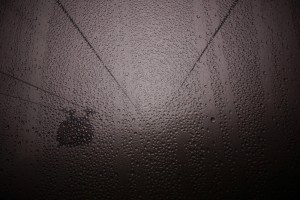

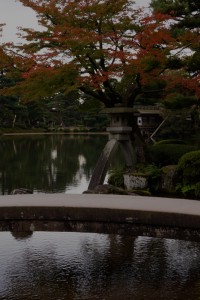
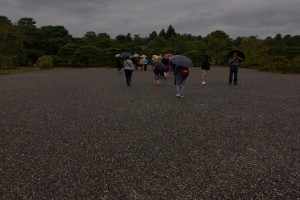

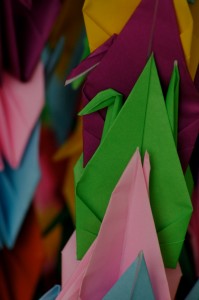

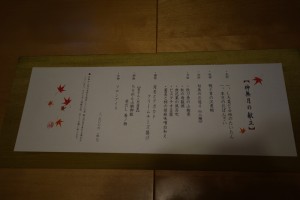











The worst drivers in the world. (October 2013)
Wednesday, October 30th, 2013It doesn’t matter if you are in Barcelona, Brisbane or Berlin, the world’s worst drivers are the ones that drive taxis.
Japan is a country where manners and civility are part of the culture. Road rage is non existent and people respect each other.
Here the taxis are retro 70s’ Toyotas and Nissans, with the occasional ‘green’, Prius. The drivers all wear ties and hats and many also have white gloves. They will even get out of the cab and help you with your luggage.
But, and there is always a but with cabbies, once they are behind the wheel they are as rude, arrogant and selfish as any of their counterparts around the world.
Cabbies are professional drivers who spend 8 to 10 hours day behind the wheel. They should be the best drivers in the world but almost to a man (and most of them are men) they are the worst.
Posted in Comment, Grumbling | No Comments »